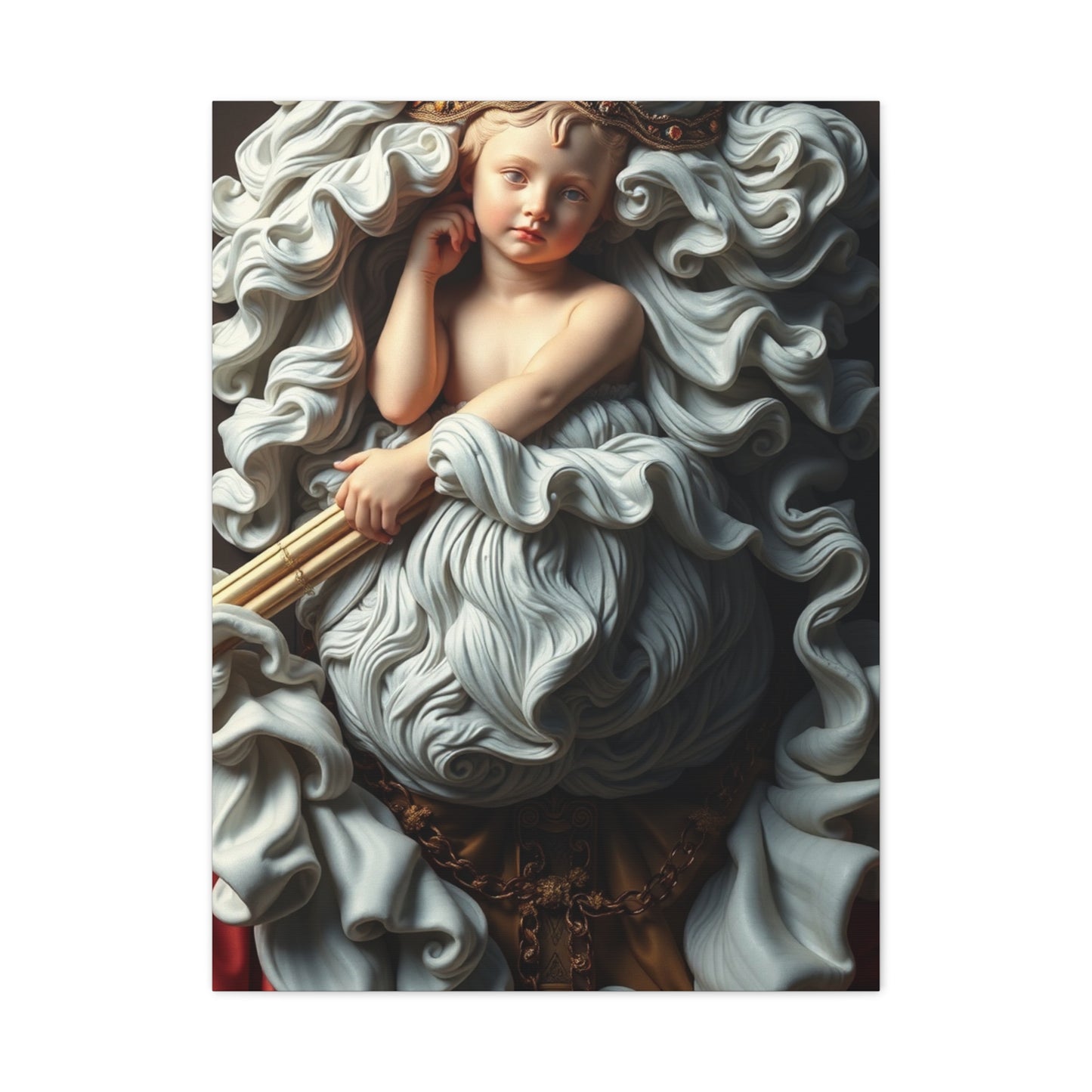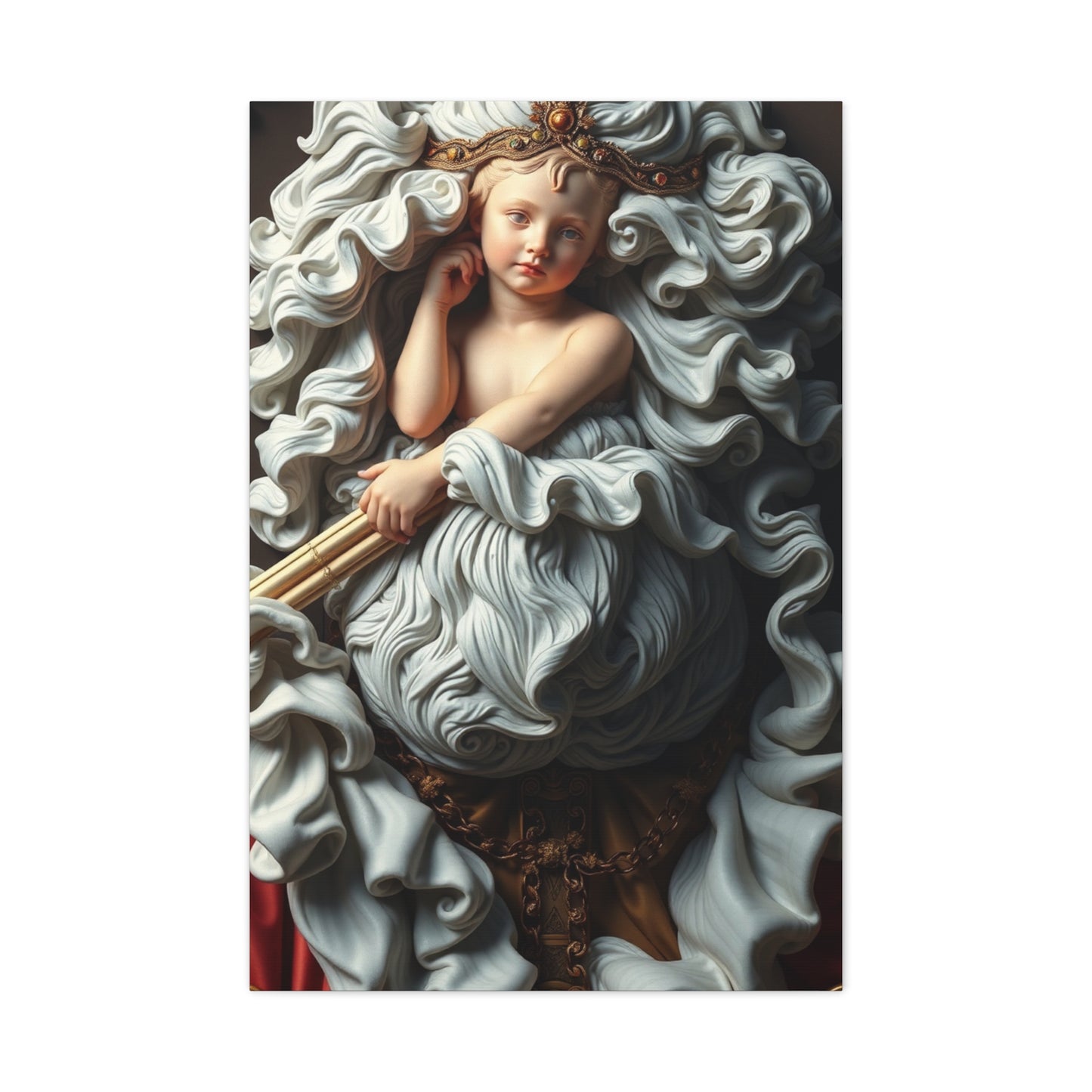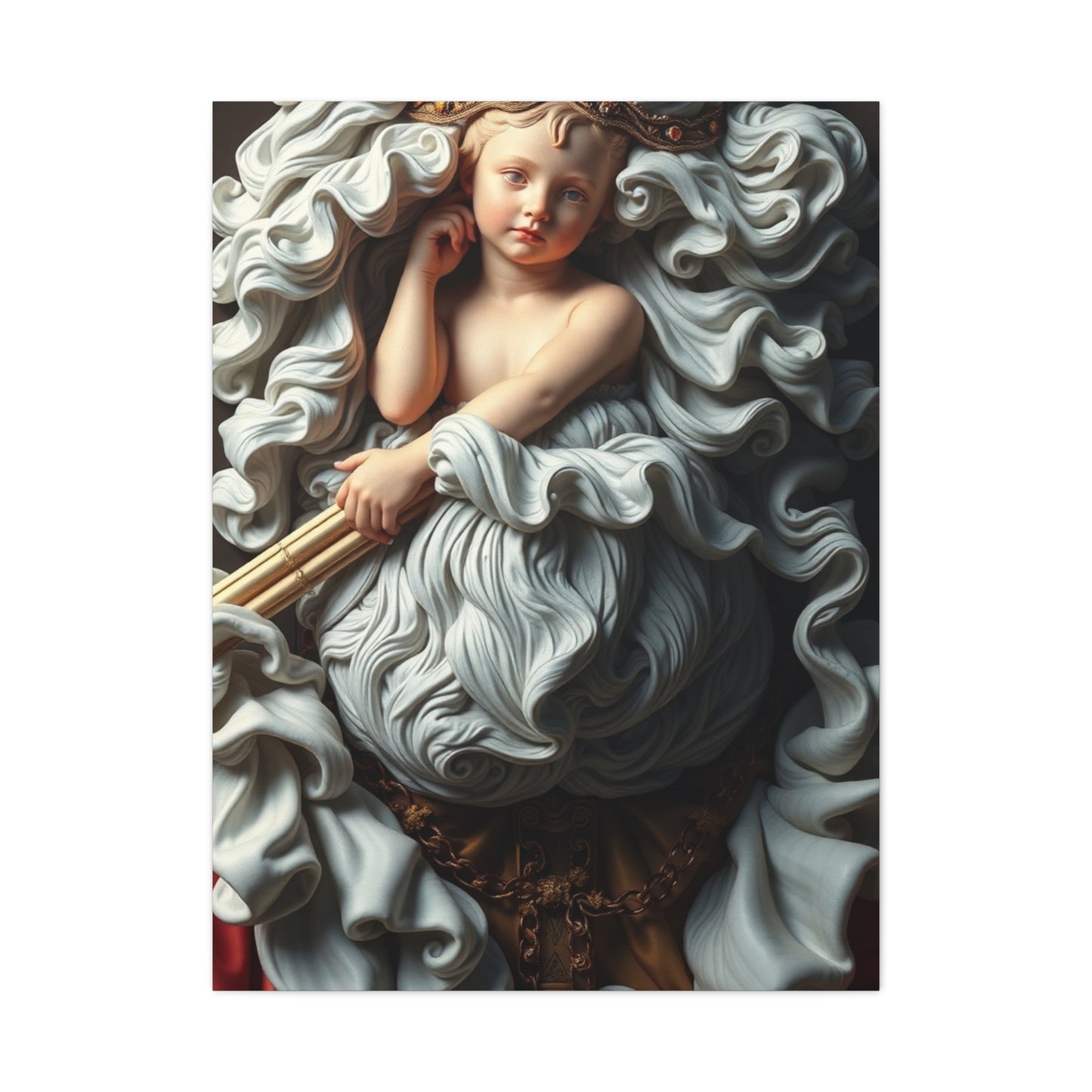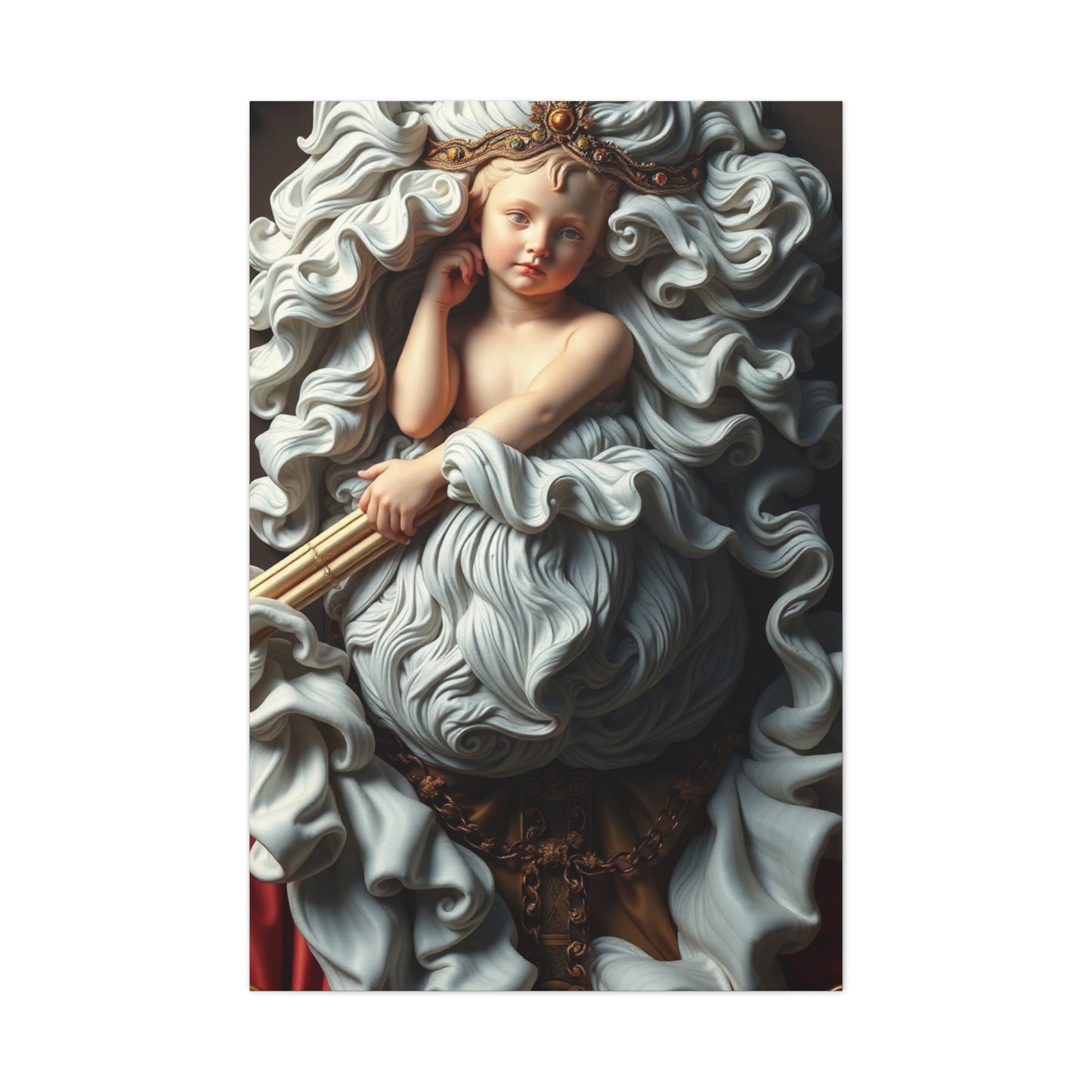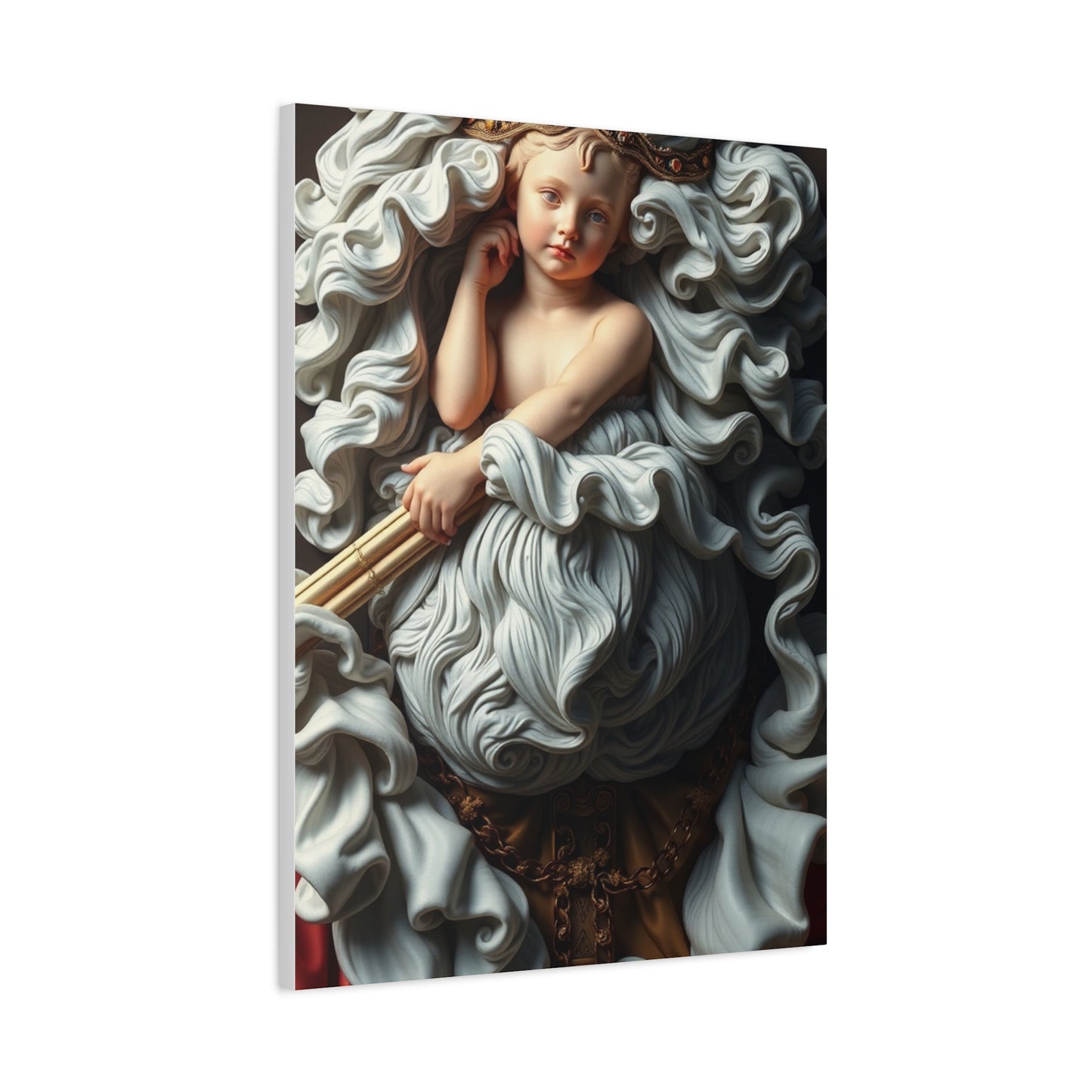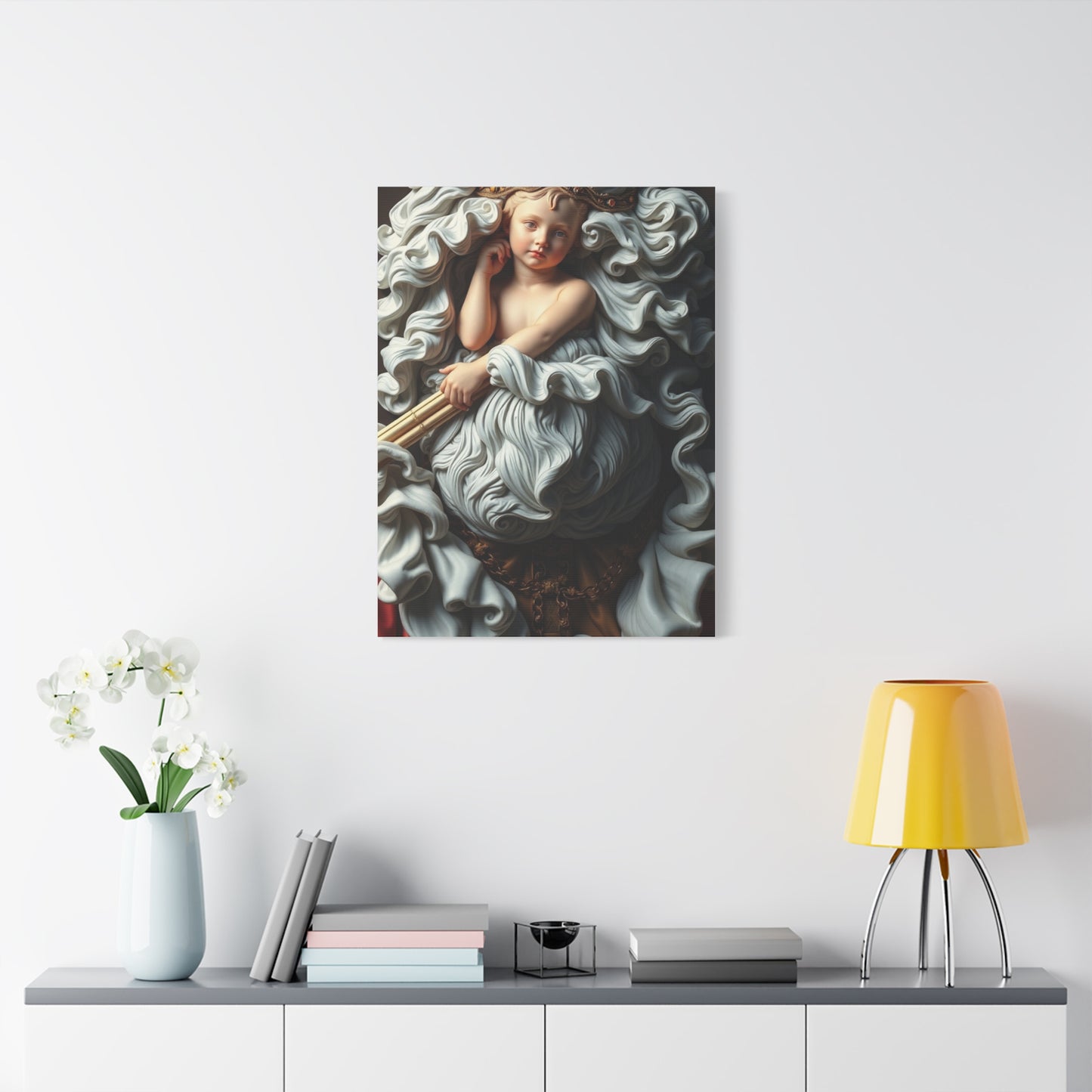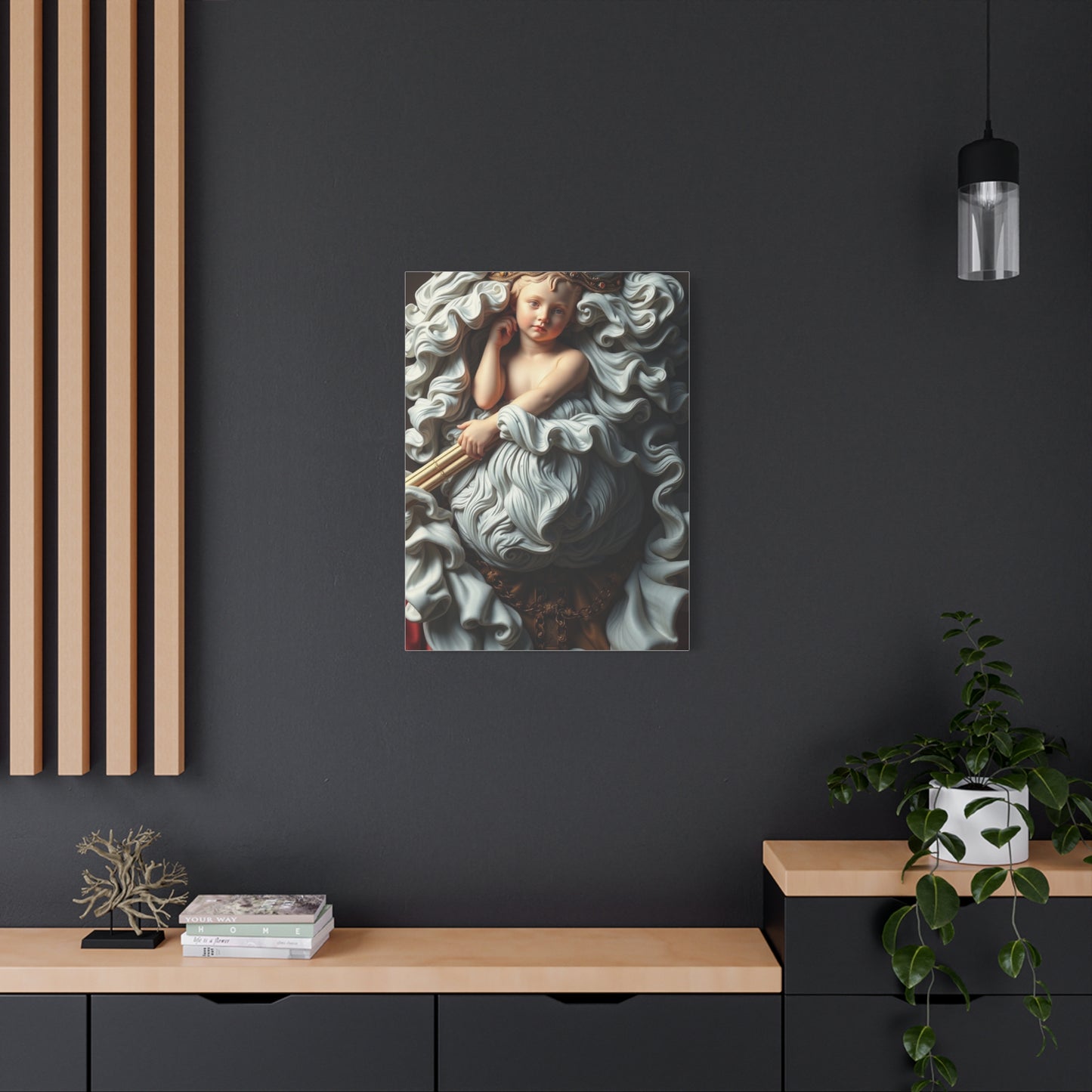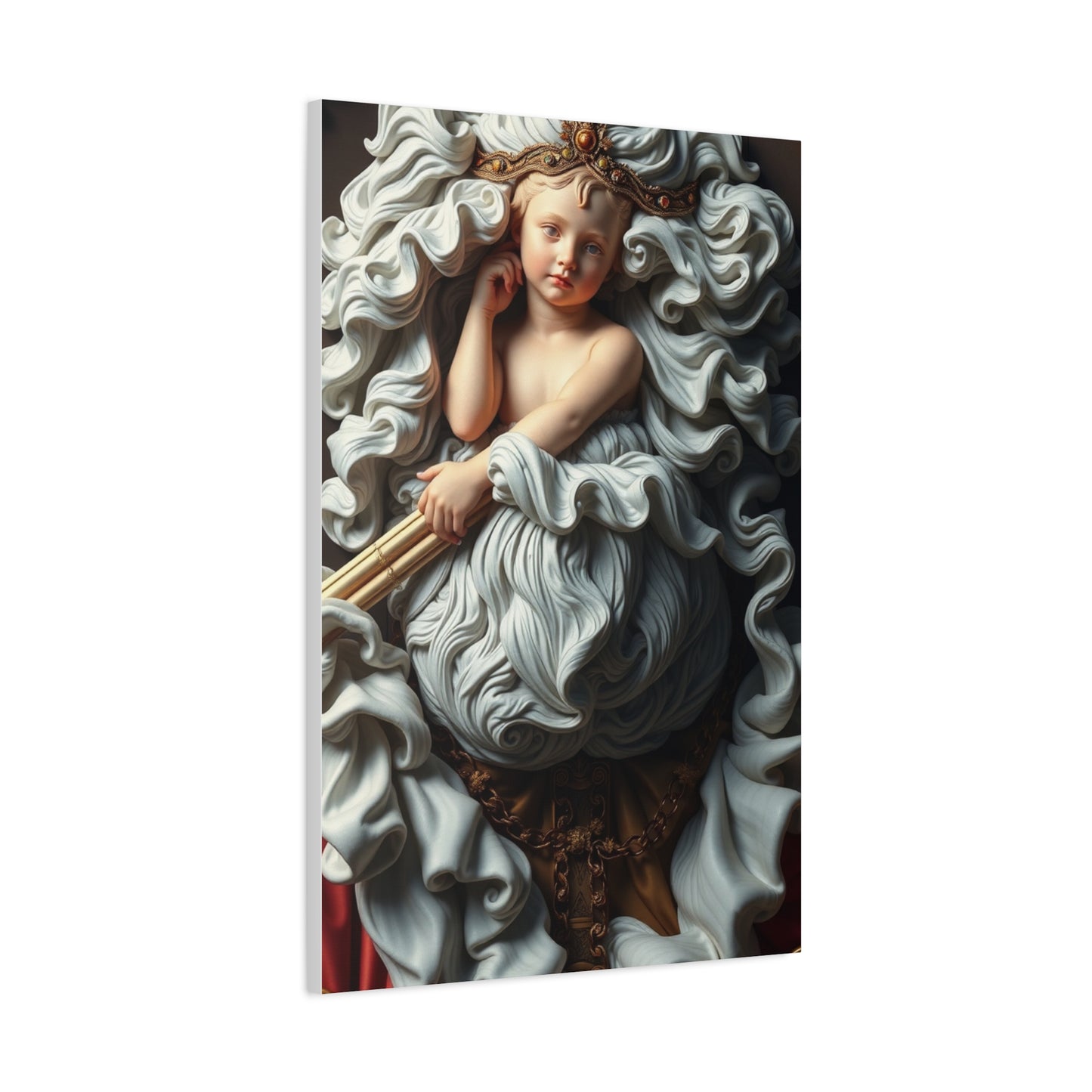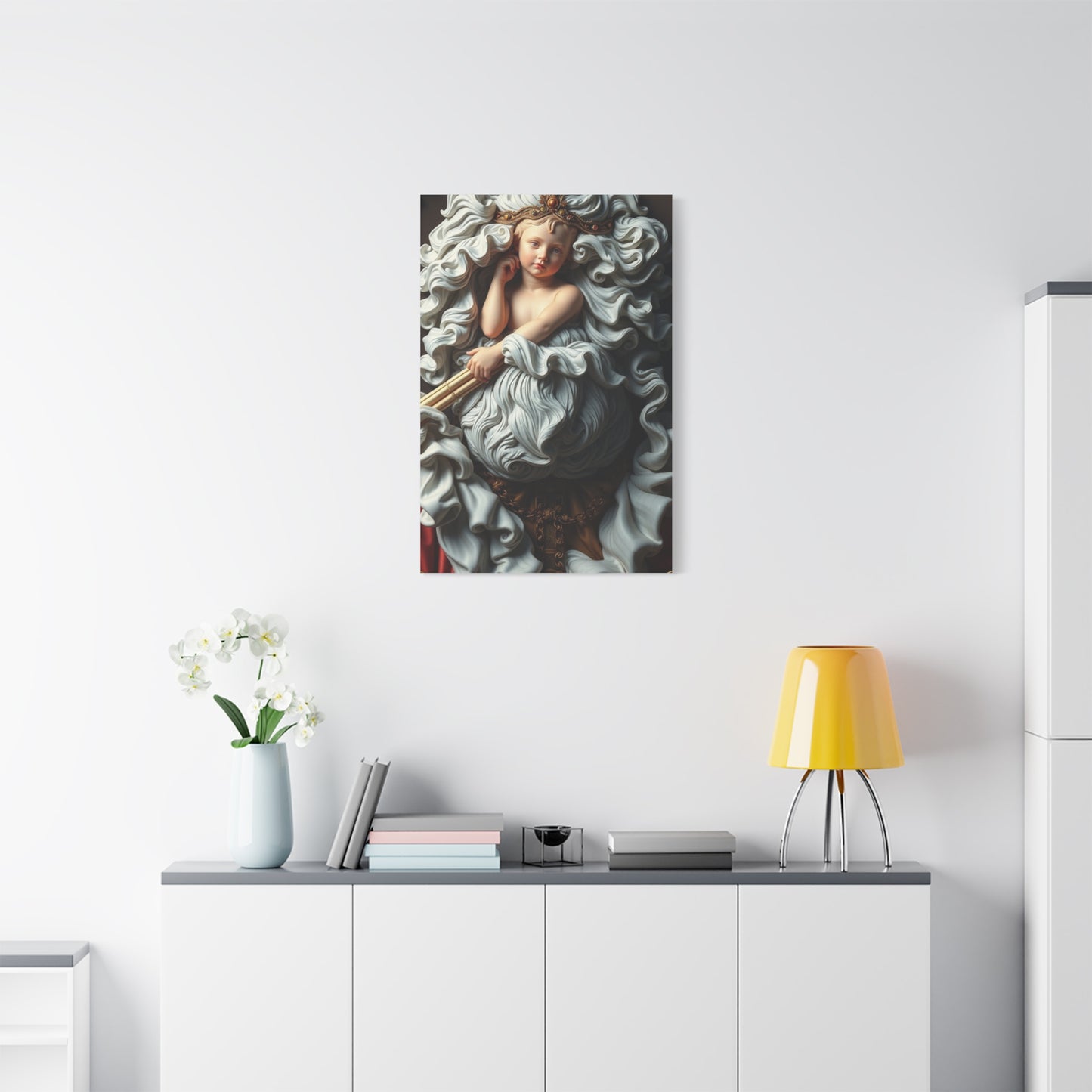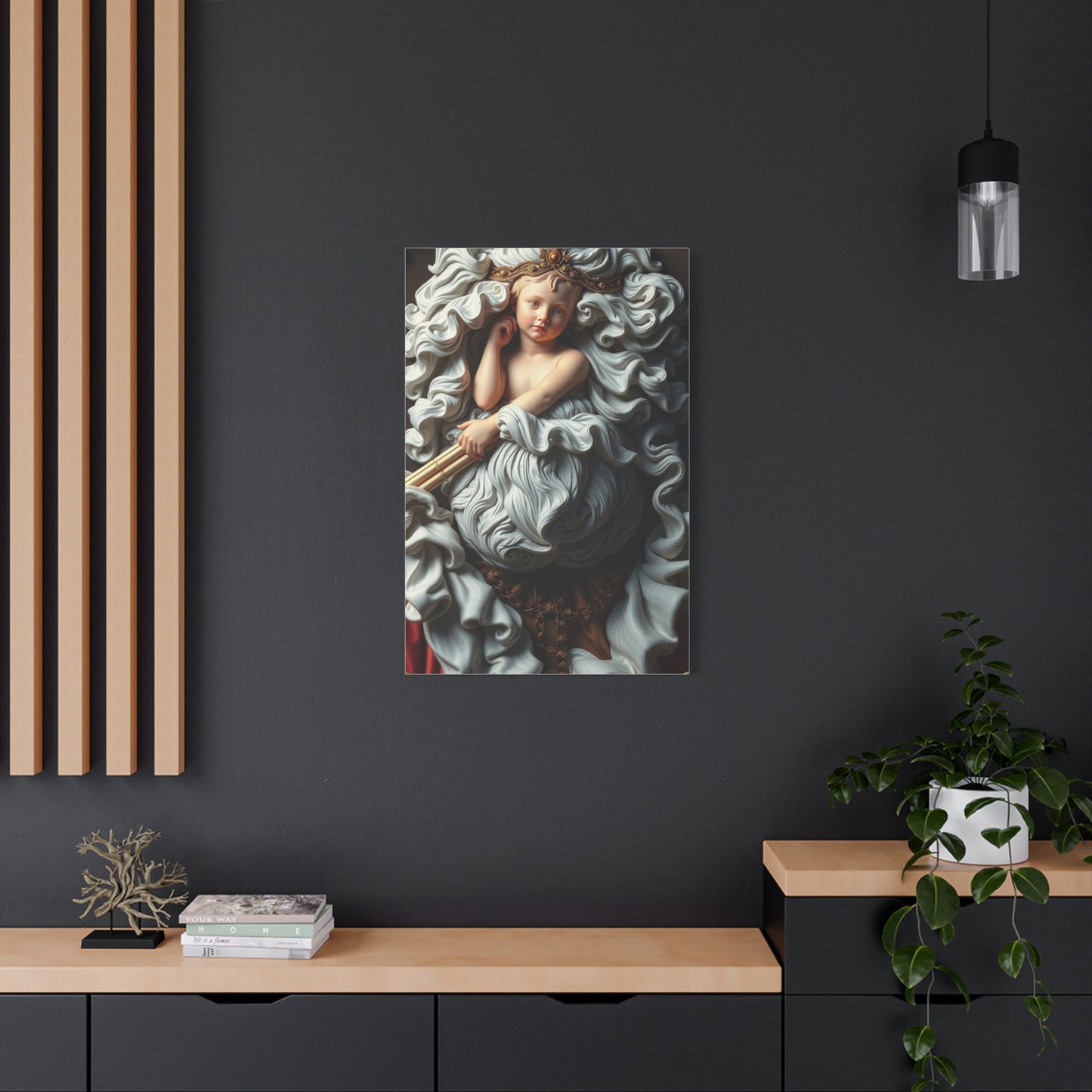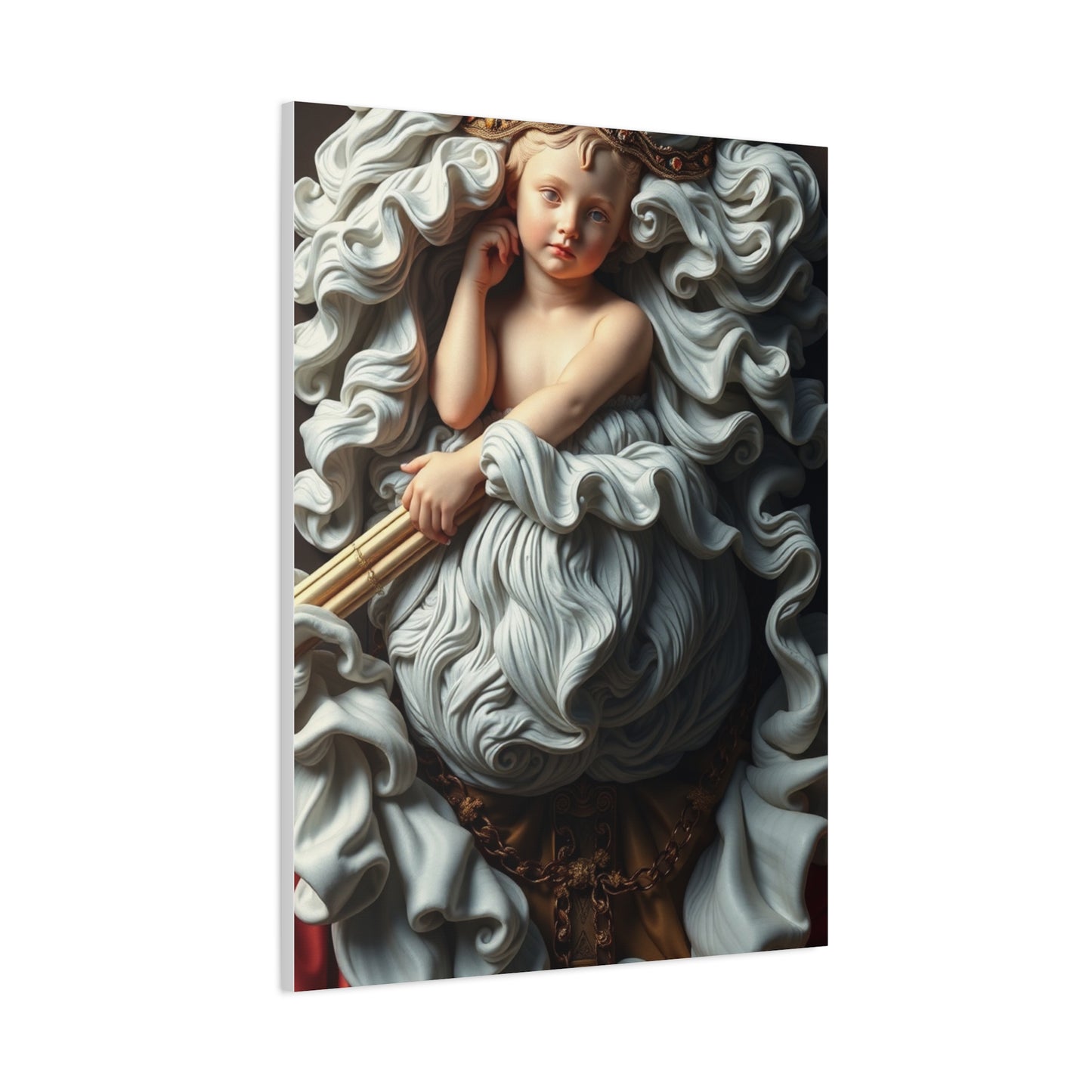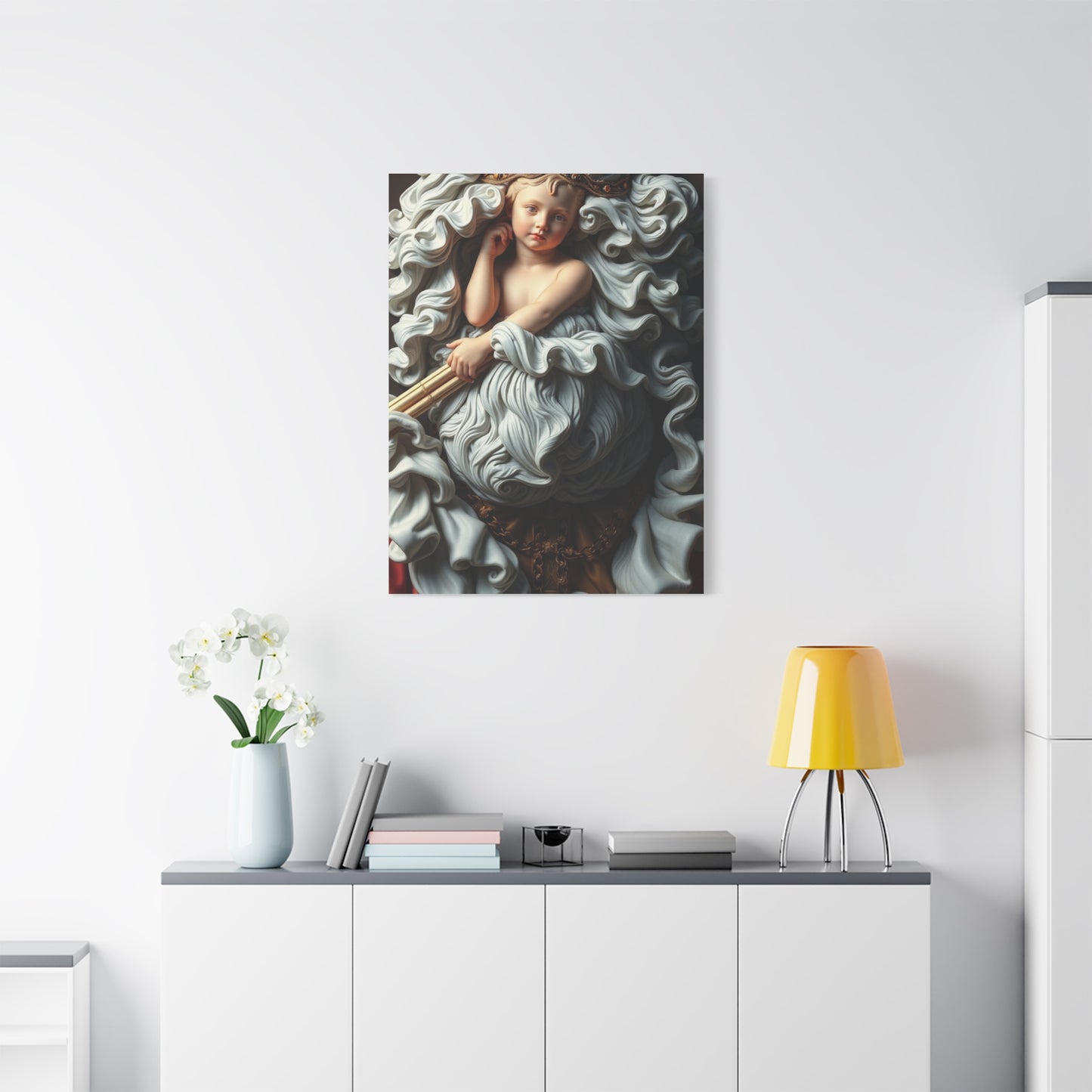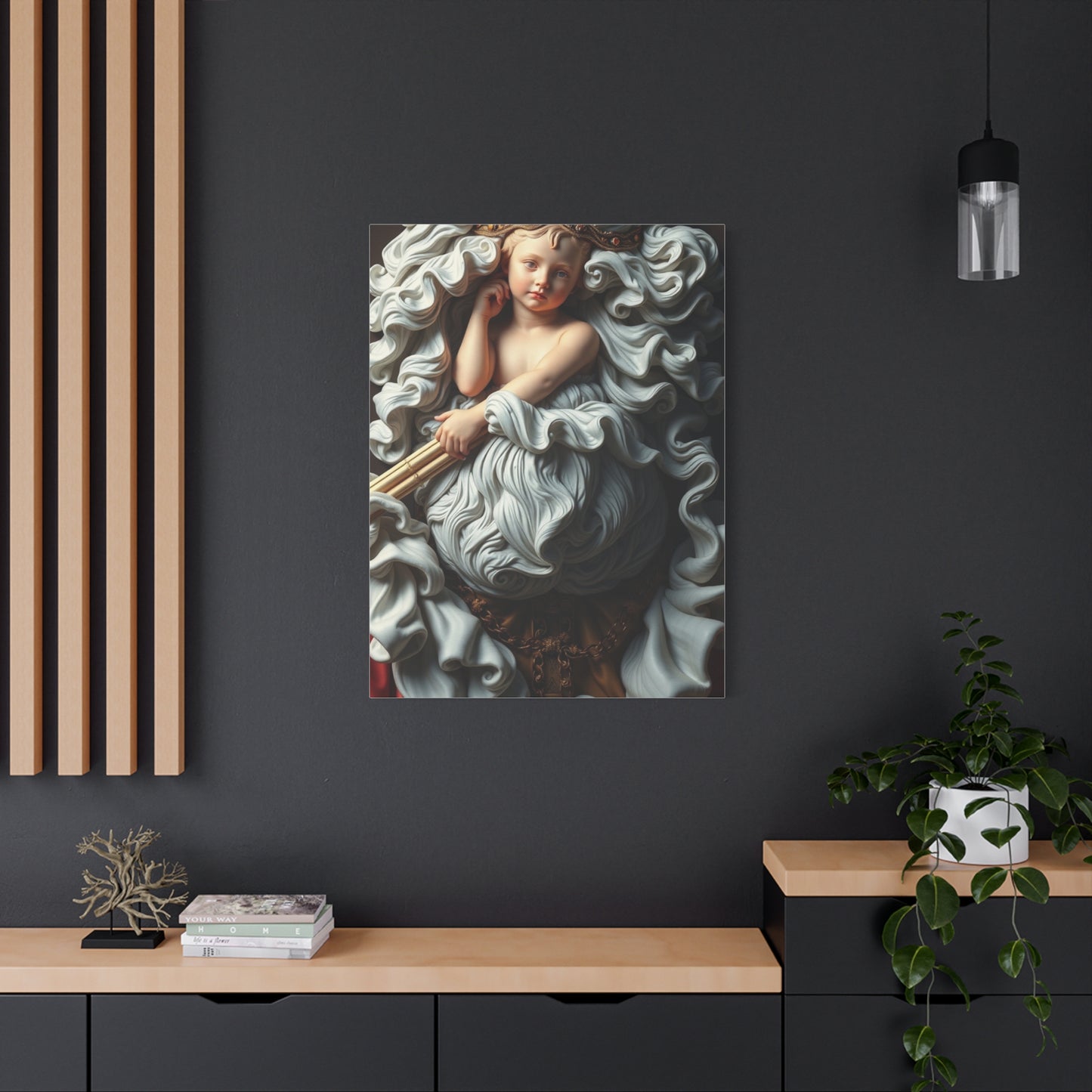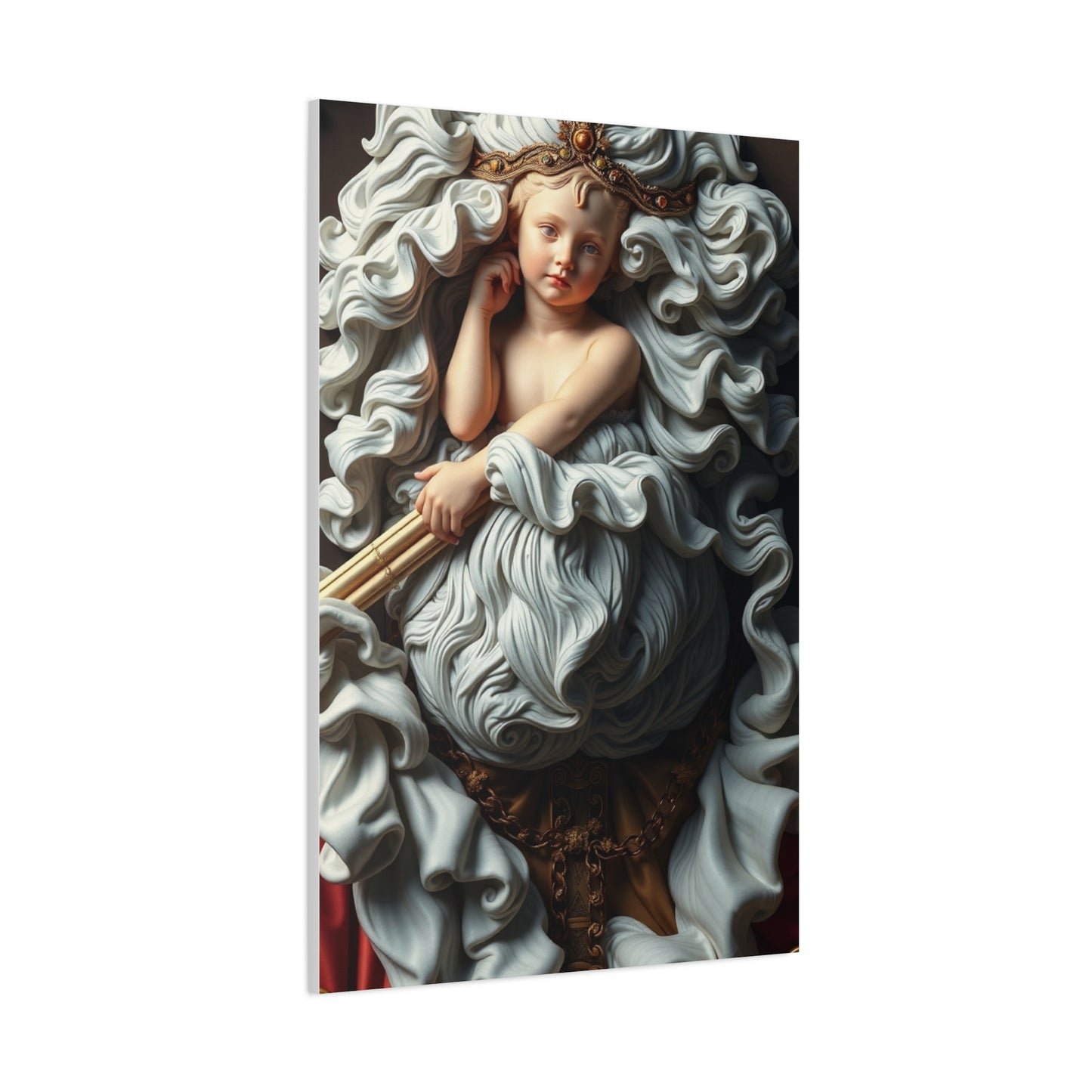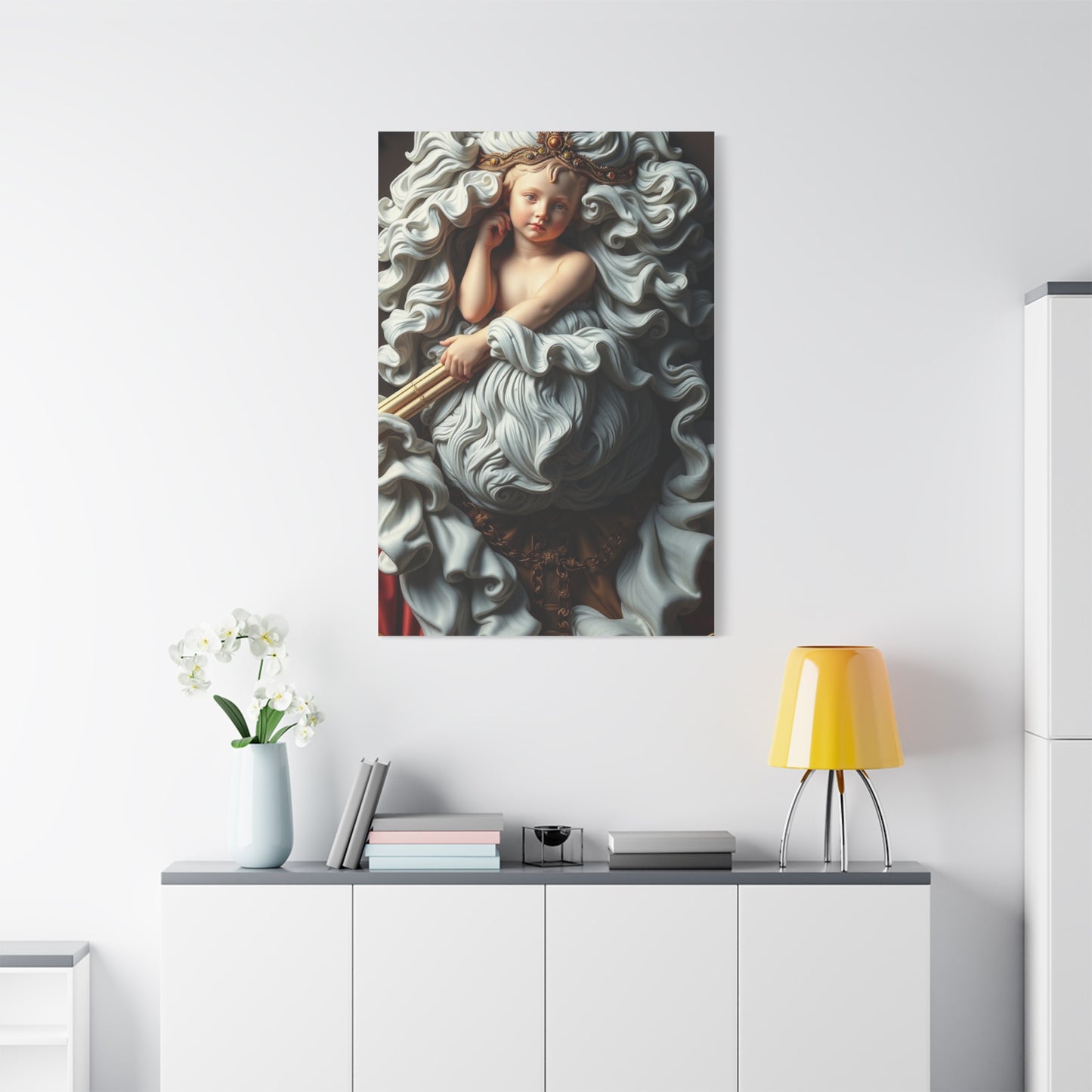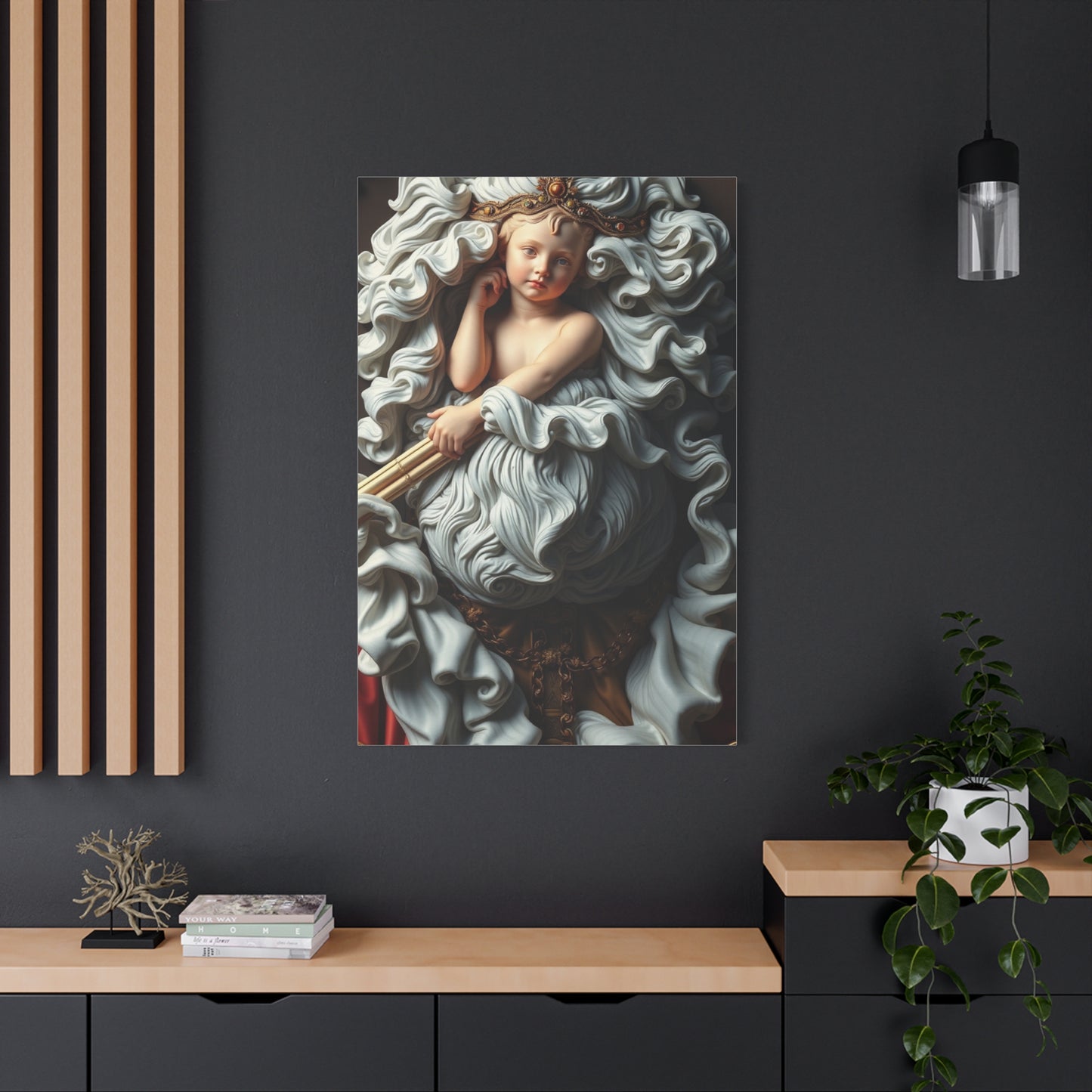Baroque to Modern: The Evolution of Regal Curvature Elegance in Art
The artistic realm of smooth regal curves represents a fundamental shift from conventional angular compositions toward flowing, organic expressions that embody sophistication and nobility. These curvaceous forms possess an inherent ability to transform any environment through their gentle undulations and refined aesthetic appeal. The power of curved elements lies in their capacity to create visual movement while maintaining harmony and balance within the artistic composition.
Curved forms in wall art have historically been associated with luxury and refinement, drawing inspiration from architectural elements found in palaces, grand estates, and ceremonial halls. The gentle sweep of a curve naturally guides the eye through the composition, creating a meditative quality that promotes tranquility and contemplation. This characteristic makes curved wall art particularly effective in creating focal points that command attention without overwhelming the viewer.
The psychological impact of curved forms extends beyond mere visual pleasure, as research in environmental psychology demonstrates that curved elements tend to reduce stress and promote feelings of comfort and safety. When incorporated into wall art, these smooth curves create an atmosphere of elegance that speaks to our innate appreciation for organic forms found in nature. The absence of sharp angles allows the mind to relax and embrace the flowing movement of the artistic expression.
Contemporary artists have mastered the technique of creating smooth regal curves through various mediums, from traditional oil paintings to modern digital compositions. The application of color gradients along curved forms enhances their three-dimensional appearance, creating depth and visual interest that draws viewers into the artwork. The interplay between light and shadow across curved surfaces adds another layer of complexity to these sophisticated compositions.
The versatility of smooth regal curves allows them to complement a wide range of decorative styles, from classical to contemporary. These flowing forms can serve as subtle background elements or dominant focal points, depending on the intended impact. The key to successful implementation lies in understanding how curved elements interact with surrounding architectural features and decorative components.
Professional artists often employ mathematical principles such as the golden ratio when creating curved compositions, ensuring that proportions remain visually pleasing and harmonious. This attention to geometric perfection contributes to the regal quality that distinguishes superior curved wall art from ordinary decorative pieces. The careful consideration of proportion and scale ensures that curved elements maintain their elegance regardless of viewing distance.
The production of smooth regal curves requires technical skill and artistic sensitivity, as achieving the perfect balance between boldness and subtlety demands extensive experience and understanding of form. Artists must consider factors such as line weight, color saturation, and compositional balance when developing curved elements that will maintain their visual impact over time.
Elegant Curved Design: Principles of Refined Artistic Creation
Elegant curved design encompasses the sophisticated integration of flowing forms with purposeful artistic intent, creating compositions that speak to refined sensibilities and aesthetic appreciation. The development of elegant curved designs requires a deep understanding of visual harmony, proportion, and the psychological impact of organic forms on human perception and emotional response.
The foundation of elegant curved design rests upon the principle of visual flow, wherein curved elements guide the viewer's attention through the composition in a purposeful and controlled manner. This flow creates rhythm and movement within static artwork, establishing a dynamic quality that brings the piece to life. The careful orchestration of curved elements ensures that each component contributes to the overall narrative while maintaining individual significance.
Color selection plays a crucial role in the success of elegant curved designs, as the choice of hues can either enhance or diminish the impact of curved forms. Subtle gradations and tonal variations along curved surfaces create depth and dimensionality, while contrasting colors can define boundaries and create dramatic effects. The strategic use of color temperature variations can make curved elements appear to advance or recede within the composition.
Texture application in elegant curved designs adds another dimension to the artistic expression, as varying surface qualities can emphasize the three-dimensional nature of curved forms. Artists often employ techniques such as impasto or glazing to create textural variations that catch and reflect light differently across curved surfaces. This interplay between texture and form contributes to the sophisticated appearance of well-executed curved wall art.
The scale and proportion of curved elements must be carefully considered to ensure that the design maintains its elegant character across different viewing distances and room configurations. Large, sweeping curves create a sense of grandeur and majesty, while smaller, more intricate curved details add refinement and delicacy to the overall composition. The relationship between these different scales creates visual hierarchy and depth.
Contemporary elegant curved design often incorporates modern materials and production techniques while honoring traditional artistic principles. Digital technologies allow artists to experiment with complex curved forms that would be difficult or impossible to achieve through conventional methods. However, the most successful pieces maintain a connection to classical design principles that have proven their enduring appeal over centuries.
The integration of curved elements with geometric forms creates interesting contrasts that can enhance the overall visual impact of wall art. The juxtaposition of organic curves against structured geometric shapes creates tension and visual interest while maintaining compositional balance. This combination allows artists to create more complex and engaging compositions that reward closer inspection.
Professional execution of elegant curved designs requires mastery of various technical skills, from color theory and composition to understanding of materials and production processes. The ability to envision how curved forms will interact with light, shadow, and surrounding elements is essential for creating artwork that maintains its elegant character under various viewing conditions.
Curvature with Royalty: Historical Context and Noble Associations
The association between curvature and royalty stems from centuries of artistic tradition that linked flowing, organic forms with nobility, power, and refined taste. Royal courts throughout history have favored curved elements in their artistic commissions, recognizing the inherent elegance and sophistication that curved forms bring to architectural and decorative applications. This historical precedent has established curved forms as symbols of prestige and elevated social status.
Ancient civilizations understood the power of curved forms to convey majesty and divine authority, incorporating flowing lines into religious and ceremonial art that was intended to inspire awe and reverence. Egyptian art featured curved elements in representations of divine figures and pharaonic regalia, while Greek and Roman artists employed curved forms in sculptures and architectural details that celebrated imperial power and cultural achievement.
The Renaissance period marked a significant evolution in the use of curvature in royal artistic commissions, as artists began to understand the mathematical principles underlying perfect proportions and harmonic relationships. Royal patrons commissioned works featuring sophisticated curved compositions that demonstrated both artistic skill and cultural refinement, establishing curved forms as hallmarks of aristocratic taste and discernment.
Baroque and Rococo periods saw the explosion of curved forms in royal palace decoration, with elaborate scrollwork, flowing drapery, and organic motifs becoming standard elements in court art. These periods established curved forms as essential components of luxury decoration, with master artisans developing increasingly sophisticated techniques for creating and implementing curved elements in wall art and architectural features.
The connection between curvature and royalty persisted through the neoclassical period, where artists refined the use of curved elements to create more restrained but equally sophisticated expressions of noble taste. The emphasis shifted from elaborate ornamentation to pure form and proportion, with curved elements serving to enhance rather than dominate the overall composition.
Modern interpretations of royal curved aesthetics draw inspiration from this rich historical tradition while adapting classical principles to contemporary sensibilities and production methods. Contemporary artists working in the royal curved tradition often reference historical motifs while creating entirely original compositions that speak to modern audiences while honoring time-tested principles of elegant design.
The psychological impact of royal curvature extends beyond mere aesthetic appreciation to encompass feelings of luxury, comfort, and elevated status. Viewers of wall art featuring royal curved elements often report enhanced feelings of sophistication and refinement, suggesting that the historical associations between curvature and nobility continue to influence contemporary perception and emotional response.
The study of historical royal curved art provides valuable insights into effective design principles and compositional strategies that remain relevant for contemporary wall art creation. Understanding how master artists of the past achieved their effects through careful manipulation of curved forms helps modern artists develop their own sophisticated interpretations of royal curvature aesthetics.
Regal Lines, Refined Art: Mastery of Linear Expression in Noble Compositions
The concept of regal lines in refined art encompasses the sophisticated use of linear elements to create compositions that embody nobility, elegance, and cultural refinement. These carefully considered lines serve as the structural foundation for artistic expressions that communicate prestige, sophistication, and elevated aesthetic sensibility through their precise execution and purposeful placement within the overall composition.
Regal lines possess specific characteristics that distinguish them from ordinary linear elements, including consistent weight, purposeful direction, and harmonious relationships with surrounding compositional elements. These lines often follow mathematical principles such as the golden ratio or Fibonacci sequences, ensuring that their proportions remain visually pleasing and psychologically satisfying to viewers across different cultural backgrounds and aesthetic preferences.
The execution of regal lines requires technical mastery and artistic sensitivity, as achieving the perfect balance between boldness and subtlety demands extensive experience and understanding of how linear elements interact with other compositional components. Artists must consider factors such as line quality, directional flow, and relationship to negative space when developing linear elements that will maintain their regal character under various viewing conditions.
Color application along regal lines can dramatically enhance their visual impact and emotional resonance, with subtle gradations and tonal variations creating depth and dimensionality that brings linear elements to life. The strategic use of color temperature and saturation can make lines appear to advance or recede within the composition, creating layers of visual depth that reward closer inspection and contemplation.
The integration of regal lines with curved forms creates dynamic compositions that combine the structure and stability of linear elements with the organic flow and movement of curved forms. This combination allows artists to create more complex and engaging wall art that appeals to viewers who appreciate both geometric precision and organic beauty in their artistic expressions.
Contemporary applications of regal lines in wall art often incorporate modern materials and production techniques while maintaining respect for traditional principles of refined composition. Digital technologies enable artists to create precise linear elements with perfect consistency while allowing for experimentation with complex geometric relationships that would be difficult to achieve through traditional methods.
The psychological impact of regal lines extends beyond visual pleasure to encompass feelings of order, stability, and cultural sophistication. Viewers of wall art featuring well-executed regal lines often report enhanced appreciation for craftsmanship and attention to detail, suggesting that these elements successfully communicate the intended messages of quality and refinement.
Professional development of regal lines requires understanding of both technical execution and cultural context, as these elements must function effectively within contemporary aesthetic frameworks while honoring historical traditions of refined artistic expression. The most successful applications of regal lines demonstrate mastery of both artistic skill and cultural sensitivity.
Graceful Curved Elegance: The Art of Sophisticated Flow in Visual Composition
Graceful curved elegance represents the pinnacle of sophisticated visual composition, combining flowing organic forms with refined artistic sensibility to create wall art that embodies both natural beauty and cultural sophistication. This approach to curved composition emphasizes harmony, proportion, and visual poetry while maintaining the technical excellence necessary for professional-quality artistic expression.
The development of graceful curved elegance requires deep understanding of how organic forms interact with human perception and emotional response. Curved elements that achieve true elegance must balance visual impact with subtlety, creating compositions that command attention while maintaining a sense of restraint and sophisticated understatement. This delicate balance distinguishes truly elegant curved art from merely decorative applications.
Color relationships within graceful curved compositions must be carefully orchestrated to enhance the flowing quality of curved forms while maintaining overall harmonic balance. The use of analogous color schemes often proves most effective for elegant curved compositions, as related hues create smooth transitions that complement the flowing nature of curved elements. Contrast must be applied judiciously to avoid disrupting the serene quality that characterizes graceful elegance.
Texture application in graceful curved elegance serves to enhance the tactile quality of curved forms while maintaining visual refinement. Subtle textural variations can suggest the three-dimensional nature of curved elements without creating harsh contrasts that might disrupt the peaceful flow of the composition. The most effective textural applications are those that enhance rather than compete with the curved forms themselves.
The scale relationships within graceful curved compositions must be carefully considered to ensure that individual elements support rather than compete with the overall artistic statement. Large, sweeping curves provide the foundational structure for elegant compositions, while smaller curved details add refinement and visual interest without overwhelming the primary compositional elements.
Light and shadow play crucial roles in the success of graceful curved elegance, as the interplay between illuminated and shadowed areas along curved surfaces creates depth and dimensional quality that brings compositions to life. Artists must understand how light will interact with curved forms under various viewing conditions to ensure that their work maintains its elegant character across different lighting situations.
Contemporary applications of graceful curved elegance often incorporate modern production methods while honoring traditional principles of refined artistic expression. Digital tools allow for precise control of curved forms and color relationships while enabling experimentation with complex compositional arrangements that push the boundaries of traditional elegant expression.
The emotional impact of graceful curved elegance extends beyond aesthetic appreciation to encompass feelings of tranquility, sophistication, and cultural refinement. Viewers often report that exposure to truly elegant curved compositions creates a meditative state that promotes relaxation and contemplation, suggesting that these works successfully achieve their intended psychological effects.
Curved Shapes, Royal Style: Integrating Noble Aesthetics with Contemporary Expression
The integration of curved shapes within royal style compositions represents a sophisticated approach to wall art that honors historical traditions of noble aesthetics while adapting these timeless principles to contemporary artistic expression and modern production capabilities. This approach requires careful balance between respect for classical precedents and innovation in materials, techniques, and compositional strategies.
Royal style curved shapes possess specific characteristics that distinguish them from ordinary decorative elements, including precise proportional relationships, sophisticated color applications, and careful attention to surface quality and finish. These elements must work together harmoniously to create compositions that communicate prestige, refinement, and cultural sophistication through their visual impact and emotional resonance.
The historical development of royal curved shapes can be traced through various periods of artistic evolution, from ancient civilizations through contemporary interpretations of classical themes. Each period contributed unique insights into the effective use of curved forms for communicating nobility and elevated social status, creating a rich tradition that continues to inform contemporary artistic practice.
Color selection for royal style curved shapes requires understanding of traditional noble color palettes while adapting these historical preferences to contemporary aesthetic sensibilities. Rich, saturated hues such as deep blues, burgundies, and golds have long been associated with royal aesthetics, but modern interpretations often employ these colors in more subtle and sophisticated applications that maintain their noble associations while appealing to contemporary tastes.
The technical execution of royal style curved shapes demands mastery of various artistic skills, from traditional painting and drawing techniques to modern digital composition methods. The ability to create smooth, flowing curves with consistent quality and visual impact requires extensive practice and understanding of both materials and production processes.
Surface treatment and finish quality are crucial components of successful royal style curved shapes, as these elements must maintain their sophisticated appearance under close inspection. The attention to detail and craftsmanship quality traditionally associated with royal commissions continues to define excellence in contemporary applications of these aesthetic principles.
Contemporary interpretations of royal curved shapes often incorporate modern materials and production technologies while maintaining respect for traditional aesthetic values and compositional principles. This integration allows artists to create works that speak to modern audiences while honoring the time-tested appeal of royal aesthetic traditions.
The market for royal style curved shapes continues to grow as consumers seek wall art that communicates sophistication and cultural refinement. Understanding the principles underlying successful royal curved compositions enables artists and designers to create works that satisfy this demand while maintaining artistic integrity and cultural authenticity.
Sleek Regal Curvature: Modern Interpretations of Classical Noble Forms
Sleek regal curvature represents a contemporary evolution of classical noble artistic traditions, combining the timeless appeal of flowing curved forms with modern aesthetic sensibilities and production capabilities. This approach emphasizes clean lines, sophisticated color relationships, and refined compositional balance while honoring the historical associations between curved forms and noble cultural expression.
The development of sleek interpretations of regal curvature requires understanding of both classical compositional principles and contemporary aesthetic preferences. Modern viewers expect sophisticated visual expression that demonstrates technical excellence while remaining accessible and emotionally engaging. This balance between refinement and accessibility distinguishes successful contemporary interpretations from mere historical revival or superficial modernization attempts.
Materials selection for sleek regal curvature often incorporates modern substrates and pigments that offer enhanced durability and color stability while enabling new possibilities for surface treatment and finish quality. Contemporary production methods allow for precise control of curved forms and color applications that would have been impossible using traditional techniques alone.
The color palettes employed in sleek regal curvature typically reflect contemporary preferences for subtle sophistication rather than historical tendencies toward bold, saturated hues. Neutral tones, muted jewel tones, and carefully orchestrated monochromatic schemes often prove more effective for modern applications than traditional royal color combinations, though the underlying principles of harmonic color relationships remain constant.
Compositional strategies for sleek regal curvature emphasize clean, uncluttered arrangements that allow curved forms to make their visual impact without competing with excessive decorative detail. This minimalist approach requires greater precision in the execution of individual elements, as each component must contribute meaningfully to the overall artistic statement without relying on ornamental complexity for visual interest.
The integration of sleek curved forms with contemporary architectural environments requires understanding of how curved elements interact with modern building materials, lighting systems, and spatial configurations. Successful applications of sleek regal curvature complement rather than compete with contemporary architectural features while maintaining their sophisticated character and emotional impact.
Digital production methods have opened new possibilities for creating sleek regal curvature that combines mathematical precision with artistic sensitivity. Computer-aided design tools enable artists to experiment with complex curved relationships and color interactions while maintaining the level of refinement necessary for professional-quality wall art applications.
The psychological impact of sleek regal curvature continues to reflect the historical associations between curved forms and feelings of luxury, comfort, and cultural sophistication. Contemporary viewers respond positively to well-executed curved compositions that demonstrate technical excellence while creating atmospheric qualities that enhance their living and working environments.
Elegant Flow in Curves: Creating Movement and Rhythm Through Artistic Expression
The concept of elegant flow in curves encompasses the sophisticated orchestration of curved elements to create visual movement, rhythm, and dynamic energy within static wall art compositions. This approach to curved composition emphasizes the temporal aspects of visual experience, guiding viewers through carefully planned sequences of visual events that unfold over time as attention moves through the artwork.
Creating effective flow in curved compositions requires understanding of how the human eye processes visual information and how attention naturally moves through two-dimensional compositions. The direction, weight, and spacing of curved elements must be carefully orchestrated to create smooth transitions that guide viewing attention while maintaining interest and preventing visual monotony.
The rhythm established through elegant curved flow operates similarly to musical rhythm, with variations in visual tempo, accent, and phrasing that create engaging sequences of visual events. Strong curved elements can serve as visual downbeats, while subtler curves provide transitional passages that maintain momentum between more prominent compositional features.
Color application along flowing curved elements can enhance or modify the perceived movement within compositions, with warm colors tending to advance and create acceleration while cool colors recede and create deceleration effects. The strategic placement of color temperature variations can create sophisticated patterns of visual rhythm that complement the physical flow of curved forms.
Scale relationships between different curved elements contribute significantly to the success of flowing compositions, as larger curves naturally command more attention and can serve as primary structural elements while smaller curves provide supporting detail and transitional connections. The careful orchestration of scale relationships creates visual hierarchy that guides attention through the composition in purposeful sequences.
Texture variations along curved forms can enhance the sense of movement and flow by creating surface qualities that catch and reflect light differently as viewing angle changes. Smooth, reflective surfaces tend to accelerate visual movement, while rougher textures create resistance that can slow or pause the flow of attention through the composition.
The negative space surrounding curved forms plays a crucial role in establishing flow patterns, as the shape and proportion of empty areas can either support or interfere with the intended movement through the composition. Successful flowing curved compositions demonstrate careful attention to both positive and negative space relationships.
Contemporary production methods enable artists to create complex flowing curved compositions that would be difficult or impossible to achieve through traditional techniques alone. Digital tools allow for precise control of curve relationships and can facilitate experimentation with subtle variations in flow patterns that enhance the overall sophistication of the final composition.
Regal Elegance in Lines: Sophisticated Linear Compositions for Distinguished Environments
Regal elegance in linear compositions represents the sophisticated application of line-based design principles to create wall art that embodies nobility, refinement, and cultural distinction. This approach emphasizes the power of precisely executed linear elements to communicate prestige and elevated aesthetic sensibility through their careful orchestration and purposeful placement within overall compositional structures.
The foundation of regal linear elegance rests upon understanding the historical associations between specific linear qualities and noble artistic traditions. Lines that embody regal character typically demonstrate consistent weight, purposeful direction, and harmonious proportional relationships that reflect mathematical principles such as the golden ratio and other classical systems of proportion.
The execution quality of regal lines must meet the highest standards of technical excellence, as any inconsistencies or imperfections in linear elements can undermine the sophisticated character that these compositions are intended to communicate. Professional production of regal linear compositions requires mastery of various technical skills and careful attention to detail throughout the creation process.
Color application along regal linear elements can dramatically enhance their visual impact and emotional resonance, with subtle gradations and tonal variations creating depth and dimensionality that brings linear compositions to life. The strategic use of metallic accents or lustrous finishes can add luxury associations that reinforce the regal character of linear elements.
The integration of regal linear elements with other compositional components requires careful consideration of how lines interact with shapes, colors, and textures within the overall artistic statement. Successful regal linear compositions demonstrate sophisticated understanding of these relationships and their impact on viewer perception and emotional response.
Contemporary applications of regal linear elegance often incorporate modern materials and production techniques while maintaining respect for traditional principles of refined composition. Advanced printing technologies and precision manufacturing methods enable the creation of linear elements with perfect consistency and exceptional surface quality.
The psychological impact of well-executed regal linear compositions extends beyond aesthetic appreciation to encompass feelings of order, stability, and cultural sophistication. These works often create atmospheric qualities that enhance the perceived prestige and refinement of their surrounding environments.
Market demand for regal linear wall art continues to grow as consumers seek sophisticated decorative solutions that communicate cultural refinement and elevated taste. Understanding the principles underlying successful regal linear compositions enables artists to create works that satisfy this demand while maintaining artistic integrity and cultural authenticity.
Curved Art Sophistication: Advanced Compositional Strategies for Refined Expression
Curved art sophistication encompasses advanced compositional strategies that elevate curved wall art beyond decorative application to achieve genuine artistic sophistication and cultural significance. This level of curved art requires masterful integration of technical excellence, cultural awareness, and aesthetic sensitivity to create works that demonstrate true artistic merit while maintaining visual appeal and emotional impact.
The development of sophisticated curved art requires extensive study of historical precedents and contemporary innovations in curved composition, understanding how master artists of different periods achieved their effects through careful manipulation of curved forms, color relationships, and compositional balance. This knowledge provides the foundation for creating contemporary works that honor established traditions while contributing original insights to the artistic dialogue.
Advanced color theory applications in sophisticated curved art go beyond simple aesthetic preferences to encompass psychological impact, cultural associations, and optical effects that enhance the perceived quality and emotional resonance of curved compositions. The most sophisticated curved artworks demonstrate masterful use of color to create spatial depth, atmospheric effects, and emotional mood that support the overall artistic intention.
Surface treatment and texture application in sophisticated curved art require understanding of how different materials and techniques interact with curved forms under various lighting conditions. The ability to predict and control these interactions enables artists to create works that maintain their sophisticated character across different viewing environments and installation contexts.
The integration of mathematical principles in sophisticated curved compositions ensures that proportional relationships remain visually pleasing and psychologically satisfying across different scales and viewing distances. Artists working at this level often employ geometric systems such as the golden ratio, Fibonacci sequences, or other mathematical frameworks to achieve harmonic balance in their curved compositions.
Contemporary production methods offer new possibilities for creating sophisticated curved art that combines traditional artistic principles with modern technical capabilities. Digital design tools enable precise control of curved forms and their relationships while facilitating experimentation with complex compositional arrangements that push the boundaries of traditional curved art applications.
The critical evaluation of curved art sophistication requires understanding of both artistic quality and cultural context, as truly sophisticated works must function effectively within contemporary aesthetic frameworks while demonstrating technical excellence and original artistic vision. The most successful sophisticated curved artworks achieve recognition from both popular audiences and critical specialists.
Professional development in curved art sophistication requires ongoing study, experimentation, and refinement of both technical skills and aesthetic judgment. Artists working at this level must remain current with developments in materials, production methods, and cultural trends while maintaining connection to historical traditions of sophisticated artistic expression.
Royal Curves on Canvas: Traditional and Contemporary Applications in Fine Art
The application of royal curves on canvas represents a sophisticated intersection of historical artistic traditions with contemporary production methods and aesthetic sensibilities. Canvas provides an ideal substrate for royal curved compositions, offering the surface quality and dimensional stability necessary for professional-quality artwork while accommodating a wide range of painting and printing techniques.
Traditional applications of royal curves on canvas draw from centuries of fine art tradition, incorporating time-tested compositional principles and color relationships that have proven their enduring appeal across different cultural contexts and historical periods. These traditional approaches provide valuable insights into effective strategies for creating curved compositions that communicate nobility and cultural refinement.
The preparation of canvas for royal curved compositions requires attention to surface quality, priming consistency, and dimensional stability to ensure that curved elements maintain their intended visual impact over time. Different canvas weights and weave patterns can affect the final appearance of curved elements, requiring careful selection based on the intended artistic effect and production method.
Contemporary painting techniques for royal curves on canvas often incorporate modern pigments and application methods while honoring traditional principles of color harmony and compositional balance. Artists working in this tradition may employ traditional brushwork, palette knife techniques, or other manual application methods to achieve the surface qualities and visual effects appropriate for royal curved aesthetics.
Digital printing applications for royal curves on canvas have opened new possibilities for creating sophisticated curved compositions that combine computer precision with traditional canvas aesthetics. High-quality printing systems can reproduce complex color gradations and subtle tonal variations that enhance the three-dimensional appearance of curved elements on canvas substrates.
The conservation and preservation of royal curved canvas artworks requires understanding of how different materials and production methods age over time and how environmental factors affect the long-term stability of curved compositions. Proper framing, display conditions, and maintenance procedures are essential for preserving the sophisticated character of royal curved canvas art.
Market considerations for royal curved canvas art include understanding consumer preferences, pricing strategies, and distribution channels that effectively reach audiences seeking sophisticated curved wall art. The canvas format offers particular advantages for both traditional gallery sales and contemporary online marketing approaches.
The future development of royal curves on canvas will likely incorporate emerging technologies and materials while maintaining connection to historical traditions of fine art excellence. Artists and producers working in this area must balance innovation with respect for established aesthetic principles and production standards.
Fluid Regal Design: Dynamic Movement in Sophisticated Artistic Expression
Fluid regal design represents the sophisticated integration of dynamic movement with noble aesthetic principles, creating wall art that combines the energy and vitality of flowing forms with the refinement and cultural significance associated with royal artistic traditions. This approach requires masterful balance between visual excitement and sophisticated restraint to achieve compositions that are both engaging and appropriately dignified.
The conceptual foundation of fluid regal design rests upon understanding how movement can be expressed through static visual media while maintaining the sophisticated character expected of royal aesthetic applications. This requires careful orchestration of curved elements, color transitions, and compositional flow to create the illusion of motion while preserving the stability and permanence appropriate for refined decorative applications.
Color application in fluid regal designs must support the sense of movement while maintaining harmonic relationships that reinforce the sophisticated character of the overall composition. Gradual color transitions along fluid forms can enhance the perception of movement, while sudden color changes can create dynamic accents that add energy without disrupting overall compositional balance.
The technical execution of fluid forms requires mastery of various artistic techniques, from traditional painting methods to contemporary digital production approaches. The ability to create smooth, flowing forms with consistent quality and visual impact requires extensive practice and understanding of how different materials and methods affect the final appearance of fluid elements.
Scale relationships within fluid regal compositions must be carefully considered to ensure that dynamic elements maintain their energy while fitting harmoniously within the overall compositional structure. Large, sweeping fluid forms provide the primary movement energy, while smaller fluid details add complexity and visual interest without overwhelming the main compositional statement.
Texture applications in fluid regal design can enhance the sense of movement and energy while maintaining the surface quality expected of sophisticated artwork. Varying texture density and orientation along fluid forms can suggest different qualities of movement, from smooth, laminar flow to more turbulent, energetic passages.
The integration of fluid elements with stable compositional components creates interesting contrasts that can enhance the overall visual impact of regal designs. The juxtaposition of dynamic fluid forms against more static elements provides visual tension that maintains viewer interest while preserving compositional balance.
Contemporary production methods enable artists to create complex fluid regal compositions that would be difficult to achieve through traditional techniques alone. Digital tools allow for precise control of fluid form relationships and can facilitate experimentation with subtle variations in movement quality that enhance overall compositional sophistication.
Elegant Curvature Forms: Geometric Principles in Organic Expression
Elegant curvature forms represent the sophisticated application of geometric principles to create organic expressions that embody both mathematical precision and natural beauty. This approach to curved composition emphasizes the underlying mathematical relationships that govern pleasing proportions while creating forms that appear naturally flowing and emotionally engaging.
The mathematical foundation of elegant curvature forms often incorporates classical proportional systems such as the golden ratio, Fibonacci sequences, and other geometric relationships that have been recognized for their psychological appeal and visual harmony. These mathematical principles provide structure and coherence to curved compositions while remaining invisible to casual observation.
The development of elegant curved forms requires understanding of how mathematical curves translate into visual art applications, including considerations of how geometric precision must be balanced with artistic sensitivity to create forms that are both mathematically sound and emotionally resonant. This balance distinguishes truly elegant curved forms from merely technical geometric exercises.
Color application along elegant curved forms must support the geometric foundation while enhancing the organic appearance of curved elements. Subtle color gradations and tonal variations can emphasize the three-dimensional quality of mathematical curves while maintaining the sophisticated character expected of elegant artistic expression.
The integration of multiple curved forms within single compositions requires careful attention to how different geometric relationships interact and influence each other. Successful elegant curvature compositions demonstrate masterful orchestration of these relationships to create complex but harmonious visual arrangements.
Surface quality and finish considerations for elegant curved forms must support both the mathematical precision and organic appearance of these elements. Smooth, consistent surfaces typically work best for emphasizing the pure geometric qualities of curved forms, while subtle texture variations can add visual interest without disrupting the underlying mathematical relationships.
Contemporary production methods offer new possibilities for creating elegant curved forms that combine mathematical precision with artistic expressiveness. Computer-aided design tools enable exact geometric control while facilitating experimentation with variations and combinations that would be difficult to achieve through manual methods alone.
The appreciation of elegant curvature forms requires some understanding of the mathematical principles underlying their construction, though this appreciation often operates at a subconscious level through our innate response to harmonic proportions and balanced relationships. Educational components can enhance viewer appreciation while maintaining the artistic integrity of curved compositions.
Curves with Regal Flair: Distinctive Style Elements in Noble Artistic Expression
Curves with regal flair encompass the distinctive stylistic elements that distinguish noble artistic expression from ordinary decorative applications, incorporating specific design characteristics, material choices, and execution standards that communicate prestige, refinement, and cultural sophistication. These elements work together to create artistic statements that embody the elevated aesthetic sensibilities historically associated with royal patronage and noble taste.
The identification of regal flair in curved compositions requires understanding of the specific visual characteristics that have been associated with noble artistic traditions across different historical periods and cultural contexts. These characteristics often include particular approaches to proportion, color selection, surface treatment, and compositional balance that distinguish royal commissions from more common decorative applications.
Historical analysis of royal curved art reveals recurring themes and stylistic elements that continue to influence contemporary interpretations of noble aesthetic principles. Elements such as precise execution, sophisticated color relationships, and attention to surface quality consistently appear in royal curved compositions across different periods and cultural traditions.
Color selection for curves with regal flair typically emphasizes sophisticated rather than merely bright or bold applications, with preference for subtle gradations, metallic accents, and color combinations that suggest luxury and refinement rather than simple visual impact. The psychological associations of different colors with nobility and prestige must be considered when developing regal color schemes.
Material selection and surface treatment for regal curved applications must meet the highest standards of quality and durability, as royal aesthetic traditions emphasize permanence and enduring beauty rather than temporary visual effects. The choice of substrates, pigments, and finishing materials significantly affects the perceived prestige and sophistication of curved compositions.
The execution standards for regal curved art require masterful technical skill and careful attention to detail throughout the production process. Any inconsistencies or imperfections in curved forms can undermine the sophisticated character that distinguishes regal applications from ordinary decorative work.
Contemporary interpretations of curves with regal flair often incorporate modern materials and production methods while maintaining respect for traditional standards of excellence and aesthetic sophistication. This integration allows artists to create works that appeal to modern audiences while honoring the time-tested principles of noble artistic expression.
Market positioning for curves with regal flair requires understanding of consumer segments that value sophisticated artistic expression and are willing to invest in premium decorative applications. The successful marketing of regal curved art often emphasizes craftsmanship, cultural heritage, and exclusivity rather than simple aesthetic appeal.
Refined Curved Aesthetics: Sophisticated Approaches to Visual Harmony
Refined curved aesthetics represent the culmination of sophisticated approaches to visual harmony, incorporating advanced understanding of proportion, color theory, and compositional balance to create curved wall art that demonstrates exceptional aesthetic sensitivity and cultural sophistication. This level of aesthetic refinement requires extensive study, practice, and development of artistic judgment to achieve truly exceptional results.
The theoretical foundation of refined curved aesthetics draws from centuries of artistic development and critical analysis, incorporating insights from psychology, mathematics, and cultural studies to understand how curved forms achieve their effects on human perception and emotional response. This theoretical understanding provides the foundation for creating curved compositions that function effectively across different cultural contexts and individual preferences.
Color theory applications in refined curved aesthetics go beyond simple harmony principles to encompass advanced understanding of optical effects, psychological associations, and cultural symbolism. The most refined curved compositions demonstrate masterful use of color to create spatial depth, atmospheric effects, and emotional resonance that support the overall aesthetic intention.
Proportional relationships in refined curved aesthetics often incorporate multiple mathematical systems and harmonic principles to create complex but coherent visual arrangements. The ability to orchestrate these relationships while maintaining artistic spontaneity and emotional authenticity distinguishes truly refined aesthetic applications from merely technical demonstrations of theoretical knowledge.
Regal Artistry in Curves: Master-Level Execution and Cultural Significance
Regal artistry in curves represents the highest level of curved wall art execution, combining masterful technical skills with deep cultural understanding and original artistic vision to create works that contribute meaningfully to the ongoing development of curved art traditions. This level of artistry requires extensive training, continuous development, and commitment to excellence that extends beyond mere technical proficiency.
The cultural significance of regal curved artistry extends beyond aesthetic appreciation to encompass historical continuity, cultural identity, and artistic heritage preservation. Master-level curved artworks serve as links between contemporary expression and historical traditions while contributing original insights that advance the artistic dialogue surrounding curved composition and royal aesthetic principles.
Conclusion
The journey from Baroque to Modern art reveals a fascinating evolution of regal curvature elegance—an aesthetic thread that weaves through centuries of artistic expression, reflecting changing cultural values, philosophies, and tastes. This evolution demonstrates not only the versatility of curved forms in art but also their enduring ability to evoke grandeur, movement, and emotion in diverse historical contexts.
In the Baroque era, the use of elaborate, flowing curves was more than a stylistic choice; it was a visual manifestation of power, drama, and spiritual intensity. The intricate swirls, ornate scrolls, and dynamic forms that characterize Baroque art and architecture symbolized the grandeur of monarchies and the divine right of kings. Curves in this period served to engage viewers emotionally and draw them into a theatrical, almost immersive experience. Whether in the sweeping lines of a cathedral’s interior or the intricate detailing of a sculpted crest, these elegant curvatures communicated a sense of majesty and divine order.
As history progressed toward the Rococo and later Neoclassical movements, the use of curvature evolved to reflect shifting sensibilities. Rococo embraced lighter, playful, and more decorative curves, embodying the aristocratic leisure and elegance of 18th-century Europe. Curves became more whimsical and delicate, capturing the intimate charm of salons and private chambers. By contrast, Neoclassicism marked a return to the disciplined lines of antiquity, where curves were more restrained, embodying ideals of harmony and rationality. This shift underscores how the regal curvature adapted to changing cultural narratives—moving from exuberance to refinement, from emotional richness to intellectual clarity.
The transition into modern art introduced an entirely new perspective on the use of curves. Movements such as Art Nouveau revived the organic, sinuous curves reminiscent of natural forms, imbuing art and design with a fresh vitality and innovation. In contrast, Modernism and its offshoots often emphasized abstraction and simplicity, yet even here, curves retained their significance. The sleek, minimalist curves in modern sculpture and architecture evoke elegance through their pure form and dynamic flow, proving that curvature can embody sophistication without the need for excessive ornamentation.
This evolution reflects the adaptability of regal curvature elegance across different artistic languages and epochs. The underlying principle remains constant: curves bring a sense of movement, rhythm, and vitality to art. They mimic the natural world’s fluidity—rivers, vines, the human form—and thereby connect viewers to something both timeless and living. Whether it is the dramatic twists of a Baroque altarpiece or the smooth arcs of a contemporary sculpture, these shapes convey a regal grace that transcends mere decoration.
Moreover, the use of curvature in art has often symbolized power and status. Historically associated with the ruling class and religious institutions, curved designs served as markers of prestige and authority. Even in modern contexts, the integration of elegant curves in public and private spaces signals sophistication and forward-thinking design. The regal curvature becomes a bridge between tradition and innovation, respecting heritage while embracing new artistic frontiers.
In addition, the technical mastery required to create these elegant curves—from the painstaking carving of stone in Baroque cathedrals to the precise engineering of modern metalwork—speaks to the dedication and skill of artists across ages. This craftsmanship not only enhances the aesthetic appeal but also honors the artistic legacy that connects the past with the present. The continued fascination with curved forms underlines a shared human appreciation for beauty that is dynamic, balanced, and expressive.
In contemporary art and design, the legacy of regal curvature continues to inspire. Designers and artists reinterpret these forms through new materials and technologies, blending tradition with contemporary innovation. The resurgence of curved lines in furniture, architecture, and digital art illustrates how these elegant shapes remain relevant and captivating. They remind us that elegance is not static but an evolving dialogue between history, culture, and creativity.
In conclusion, the evolution of regal curvature elegance from the Baroque period to the modern age highlights the enduring power of curved forms to convey beauty, emotion, and status. Through centuries of transformation, curves have served as a dynamic visual language—one that adapts to cultural shifts yet retains a core of grace and sophistication. Whether in the opulent ornamentation of Baroque masterpieces or the sleek contours of modern design, regal curvature continues to captivate and inspire, bridging the past with the future. This timeless elegance reminds us that art is a living tradition, constantly reinventing itself while honoring the curves of history.

















